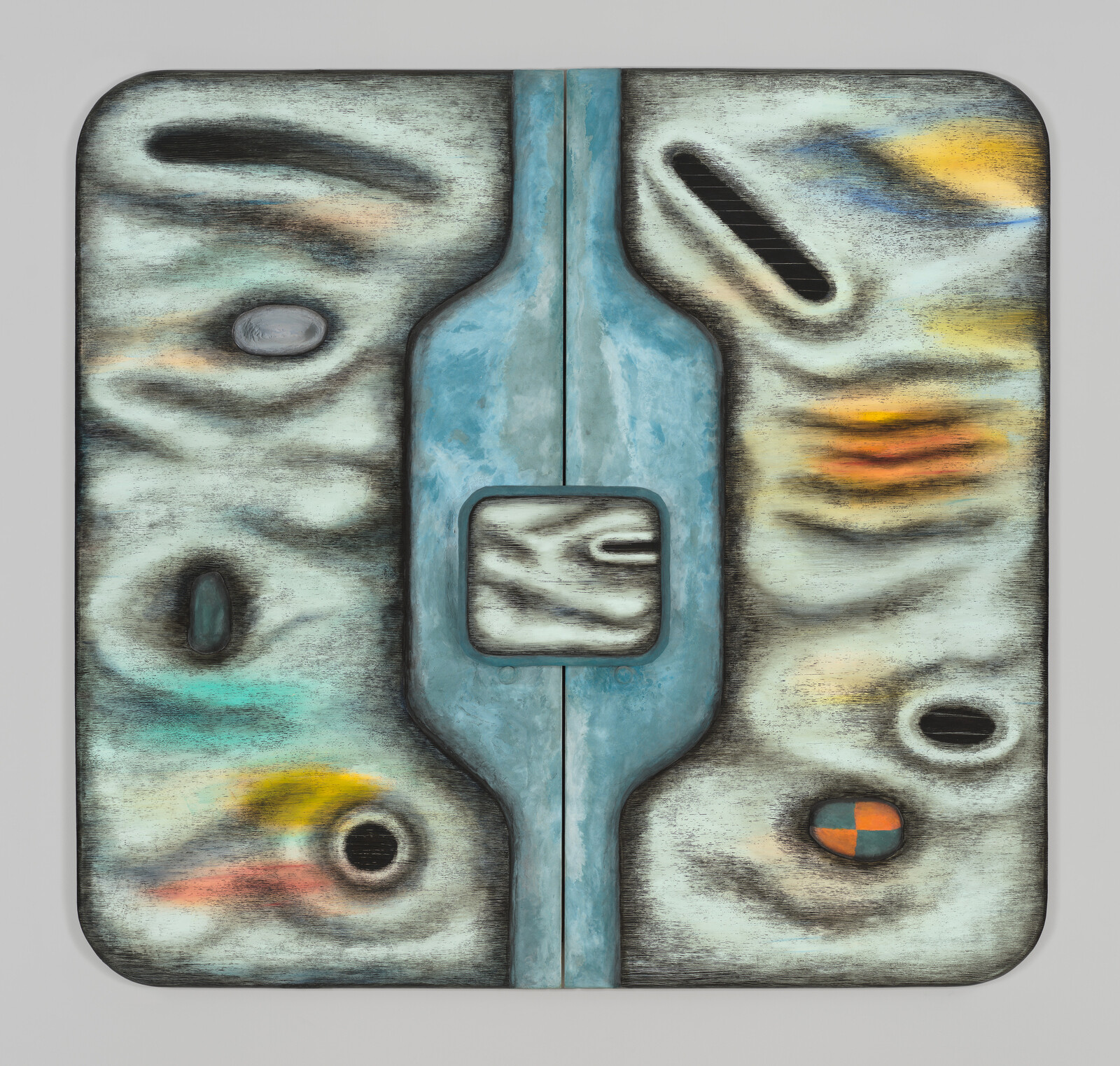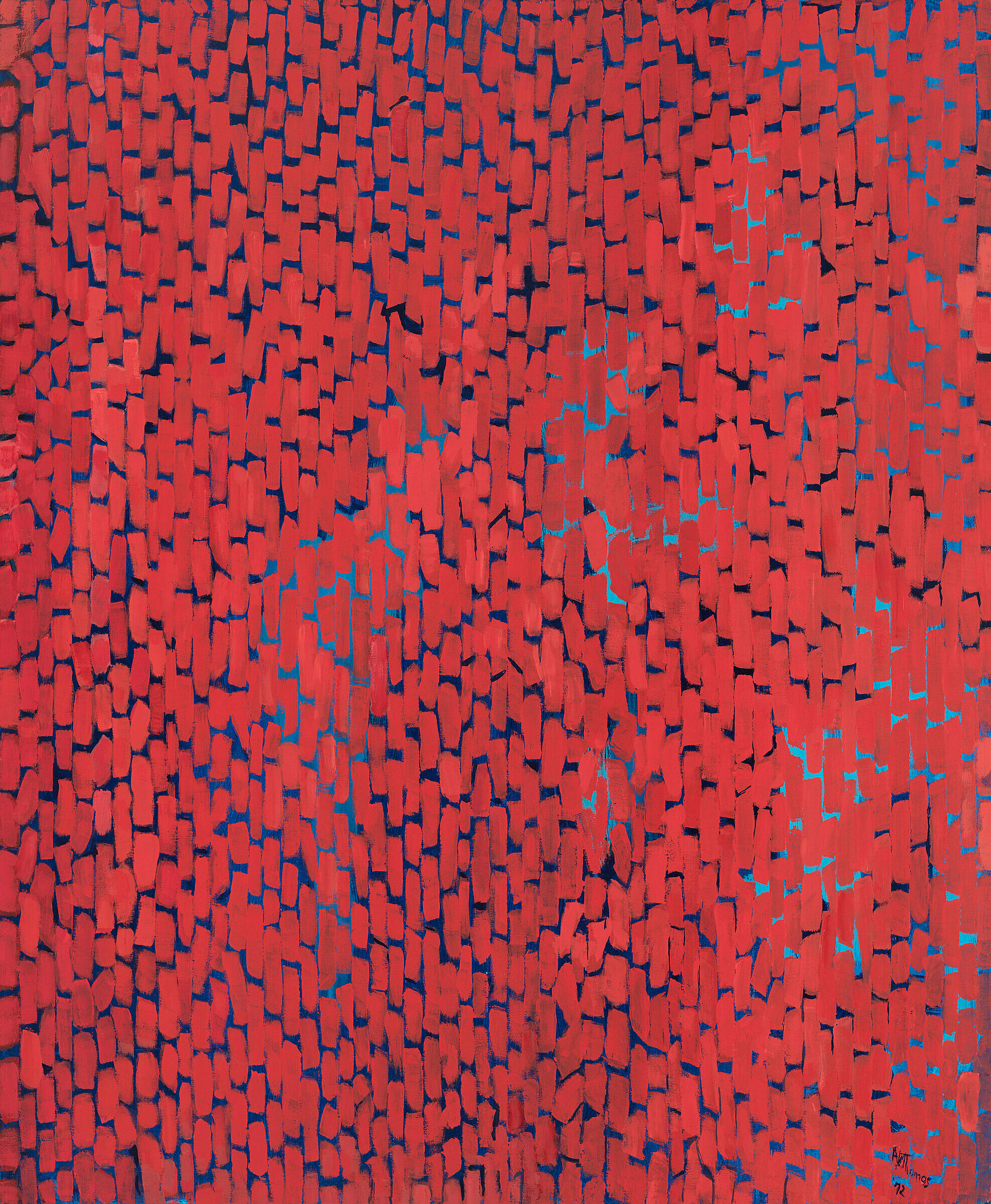Not on view
Date
1984
Classification
Paintings
Medium
Acrylic, concrete, Styrofoam, oil, and enamel on wood, 3 parts
Dimensions
Overall: 89 15/16 × 94 3/4 × 8 5/8in. (228.4 × 240.7 × 21.8 cm)
Accession number
2021.105a-c
Credit line
Whitney Museum of American Art, New York; purchase, with funds from the Painting and Sculpture Committee
Rights and reproductions
© Tishan Hsu / Artists Rights Society (ARS), New York
Audio
-
Tishan Hsu, Outer Banks of Memory, 1984
In In the Balance: Between Painting and Sculpture, 1965–1985 (Spanish)
0:00
Tishan Hsu, Outer Banks of Memory, 1984
0:00
Jennie Goldstein: Una de las principales inquietudes [de Hsu] es la relación entre la tecnología y el cuerpo. Es una temática que le fascina desde la década de 1980. En cierta medida, anticipó todo tipo de avances tecnológicos o maneras de entender el rol de los medios de comunicación (en especial, de las redes sociales) y otros contenidos tecnológicos en nuestras vidas.
Narrator: Tishan Hsu estudió Diseño Ambiental y Arquitectura en el MIT antes de convertirse en artista. La curadora Jennie Goldstein analiza su obra, Outer Banks of Memory.
Jennie Goldstein: Podemos verla como si fuera una imagen de topografía, un cuerpo, como si tuviera orificios y aberturas, y partes que sobresalen. Al parecer, hay una especie de pantalla en el centro que está apoyada sobre la propia pintura. Es como si fuera una pantalla sobre otra pantalla, algo portátil que se relaciona con toda la obra. Si la miro con ojos del siglo XXI, no puedo dejar de pensar en las tabletas u otros tipos de tecnologías portátiles.
Tishan Hsu siempre se dedicó a la pintura. De modo que no es un rechazo a un medio que tiene una tradición milenaria y un cambio a algo más avanzado (o, mejor dicho, algo más nuevo). Se trata de alguien que está analizando ideas complejas en torno a un tipo de arte muy antiguo.
-
Tishan Hsu, Outer Banks of Memory, 1984
In In the Balance: Between Painting and Sculpture, 1965–1985
0:00
Tishan Hsu, Outer Banks of Memory, 1984
0:00
Jennie Goldstein: Among Hsu’s primary concerns is the relationship between technology and the body, and this is something that he's been fascinated with since the 1980s. And, in some ways, has proven to be anticipatory of all kinds of technological advances or ways that we understand the role of media, especially social media, other technological content in our lives.
Narrator: Tishan Hsu studied Environmental Design and Architecture at MIT before becoming an artist. Curator Jennie Goldstein discusses this work, Outer Banks of Memory.
Jennie Goldstein: You can understand it to be like a topography, like a body, as if it has orifices and openings, parts of it project out, parts of it recede. There seems to be a kind of screen-like shape in the center that's propped up against the painting itself. So it becomes like a screen on top of a screen, something portable that's related to the whole. So when I look at it with twenty-first century eyes. I can't help but think of, you know, tablets or other kinds of portable technologies.
He's always been committed to painting. So this is not a rejection of a medium that has ancient roots for something more advanced or new would be a better way to say that. But someone who's thinking through kind of complex ideas about a very old art form.
Installation photography
-


Installation view of In the Balance: Painting and Sculpture, 1965-1985 (Whitney Museum of American Art, New York, October 19, 2022 – March 5, 2023). From left to right: Lynda Benglis, Contraband, 1969; Mary Ann Unger, Water Spout, 1980-81; Jane Kaufman, Untitled, 1969; Judy Chicago, Trinity (Outdoor Version), 1965/2019; Tishan Hsu, Outer Banks of Memory, 1984; Kay Walking Stick, Gray Apron, 1974. Photograph by Ron Amstutz
From the exhibition In the Balance: Between Painting and Sculpture, 1965–1985
-
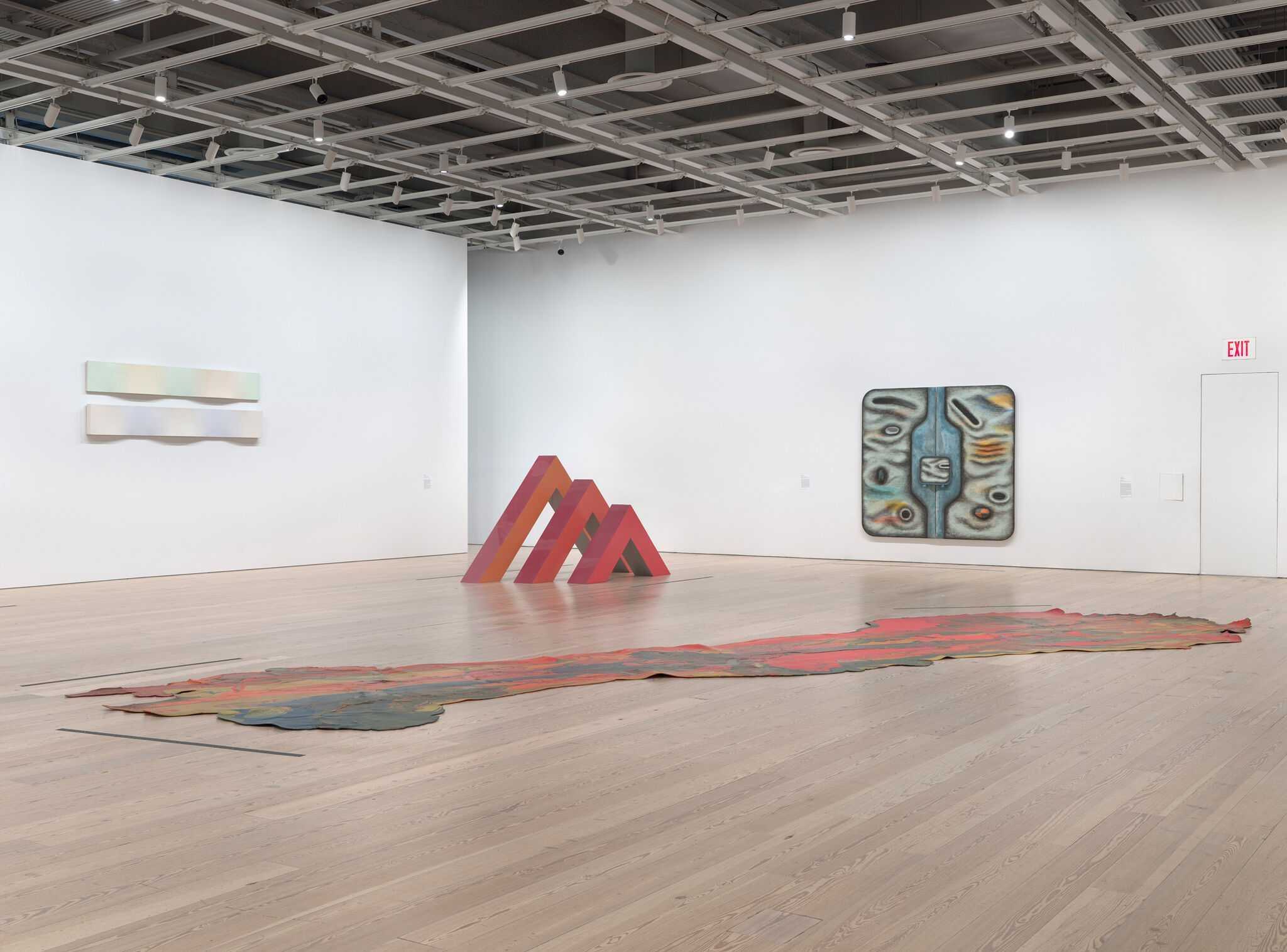

Installation view of In the Balance: Painting and Sculpture, 1965-1985 (Whitney Museum of American Art, New York, October 19, 2022 – March 5, 2023). From left to right: Lynda Benglis, Contraband, 1969; Jane Kaufman, Untitled, 1969; Judy Chicago, Trinity (Outdoor Version), 1965/2019; Tishan Hsu, Outer Banks of Memory, 1984. Photograph by Ron Amstutz
From the exhibition In the Balance: Between Painting and Sculpture, 1965–1985
-
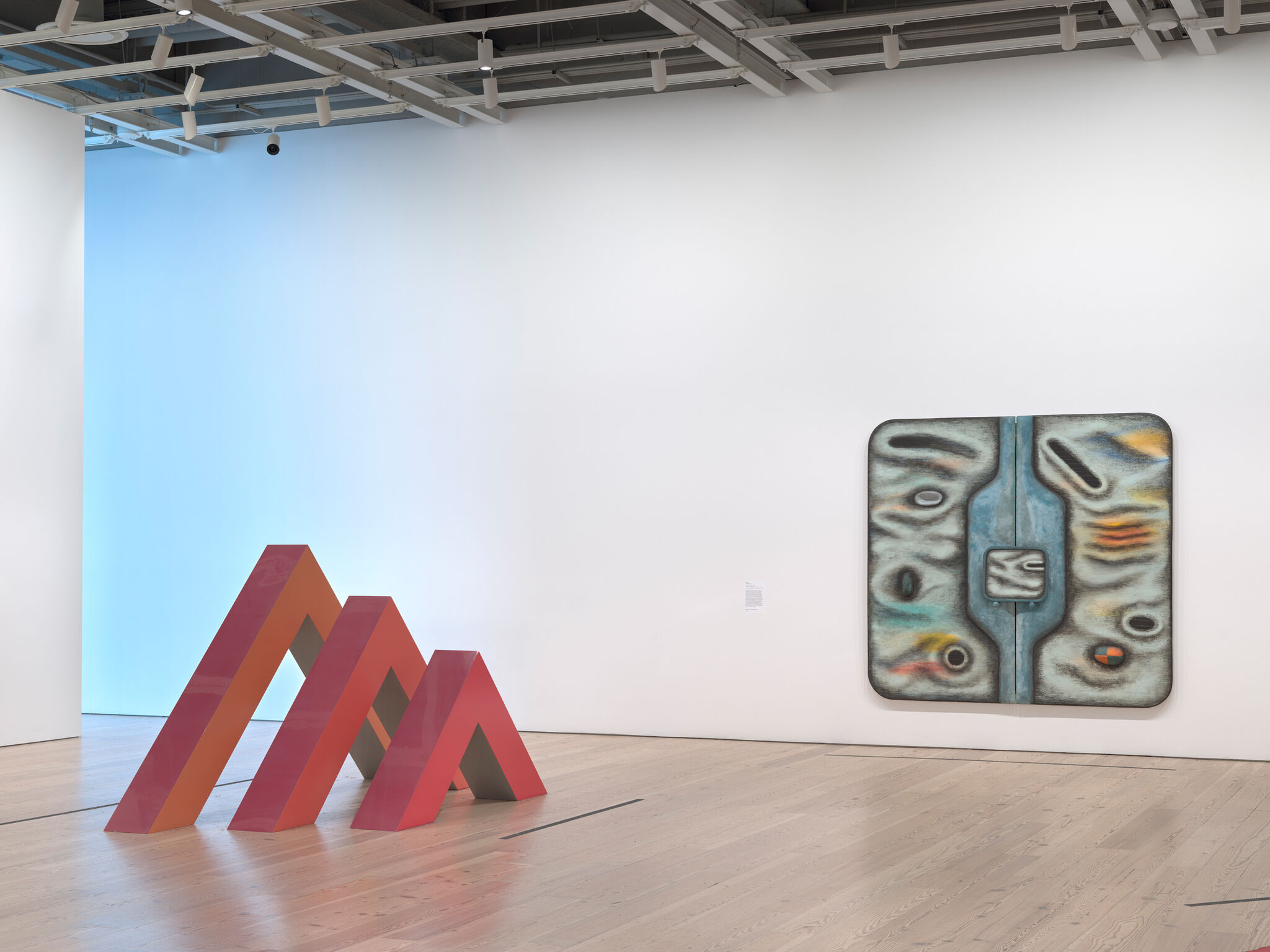

Installation view of In the Balance: Painting and Sculpture, 1965-1985 (Whitney Museum of American Art, New York, October 19, 2022 – March 5, 2023). From left to right: Judy Chicago, Trinity (Outdoor Version), 1965/2019; Tishan Hsu, Outer Banks of Memory, 1984. Photograph by Ron Amstutz
From the exhibition In the Balance: Between Painting and Sculpture, 1965–1985
-
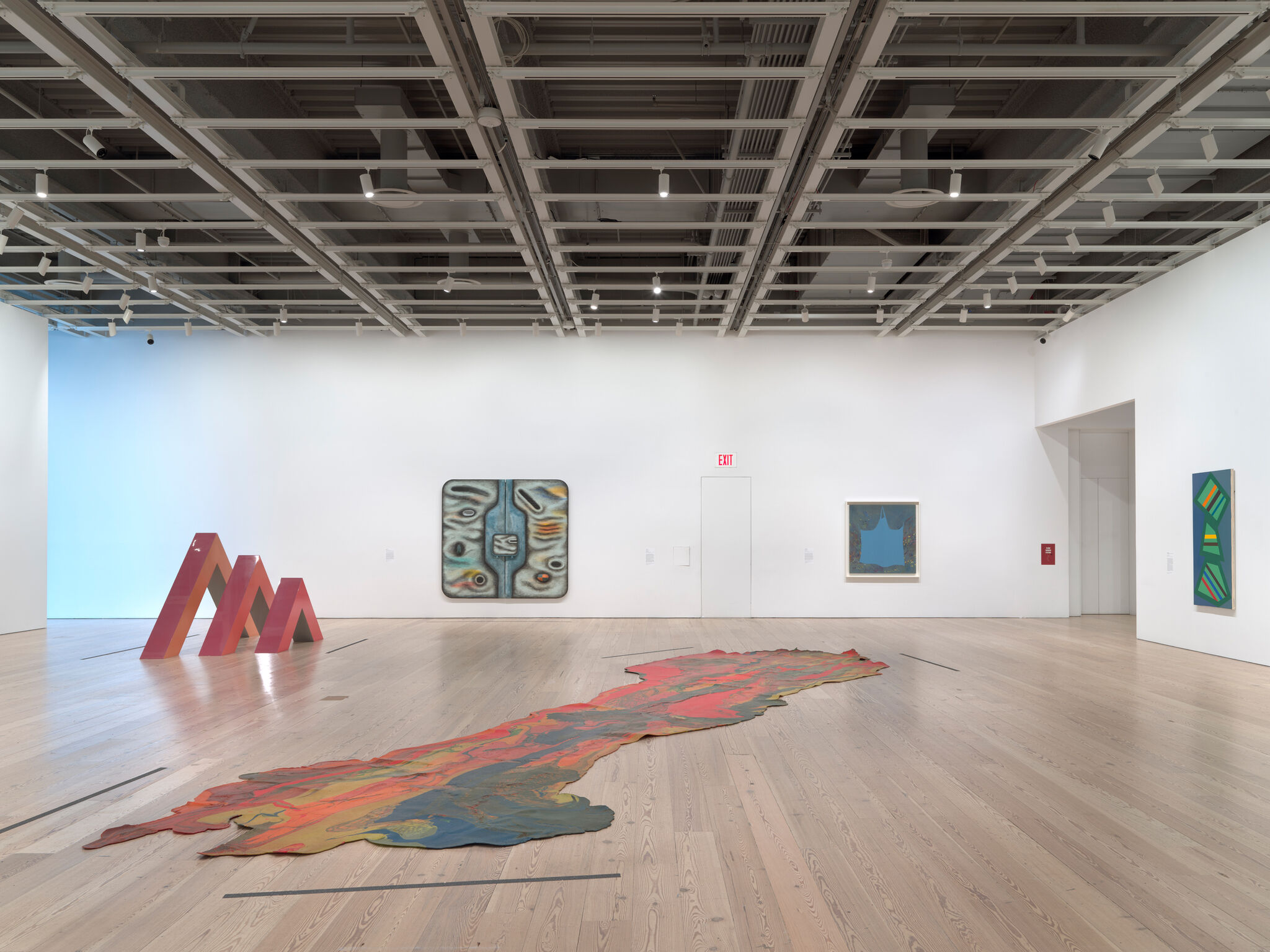

Installation view of In the Balance: Painting and Sculpture, 1965-1985 (Whitney Museum of American Art, New York, October 19, 2022 – March 5, 2023). From left to right: Lynda Benglis, Contraband, 1969; Judy Chicago, Trinity (Outdoor Version), 1965/2019; Tishan Hsu, Outer Banks of Memory, 1984; Kay WalkingStick, Gray Apron, 1974; Freddy Rodriguez, Y me quedé sin nombre, 1974. Photograph by Ron Amstutz
From the exhibition In the Balance: Between Painting and Sculpture, 1965–1985

